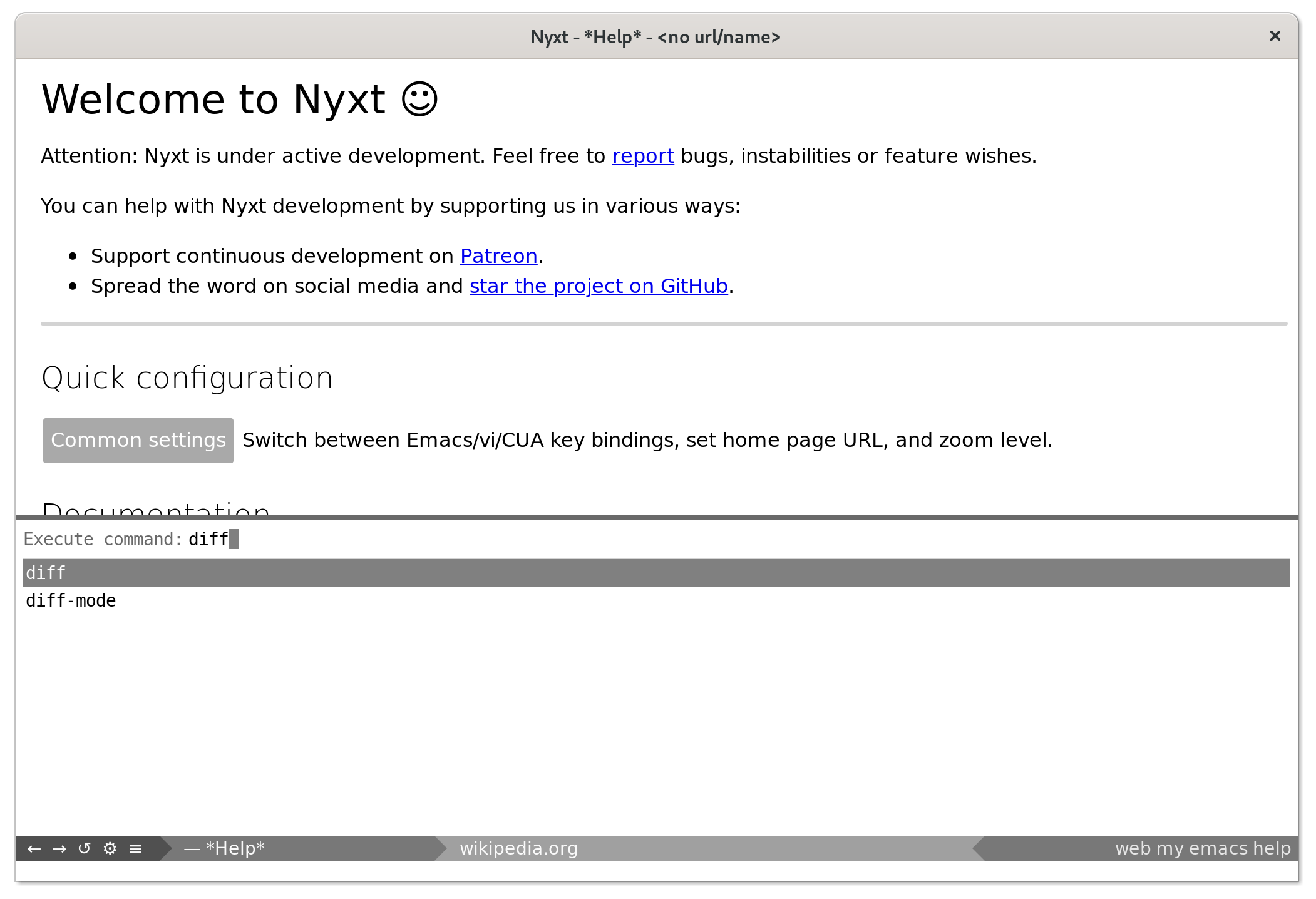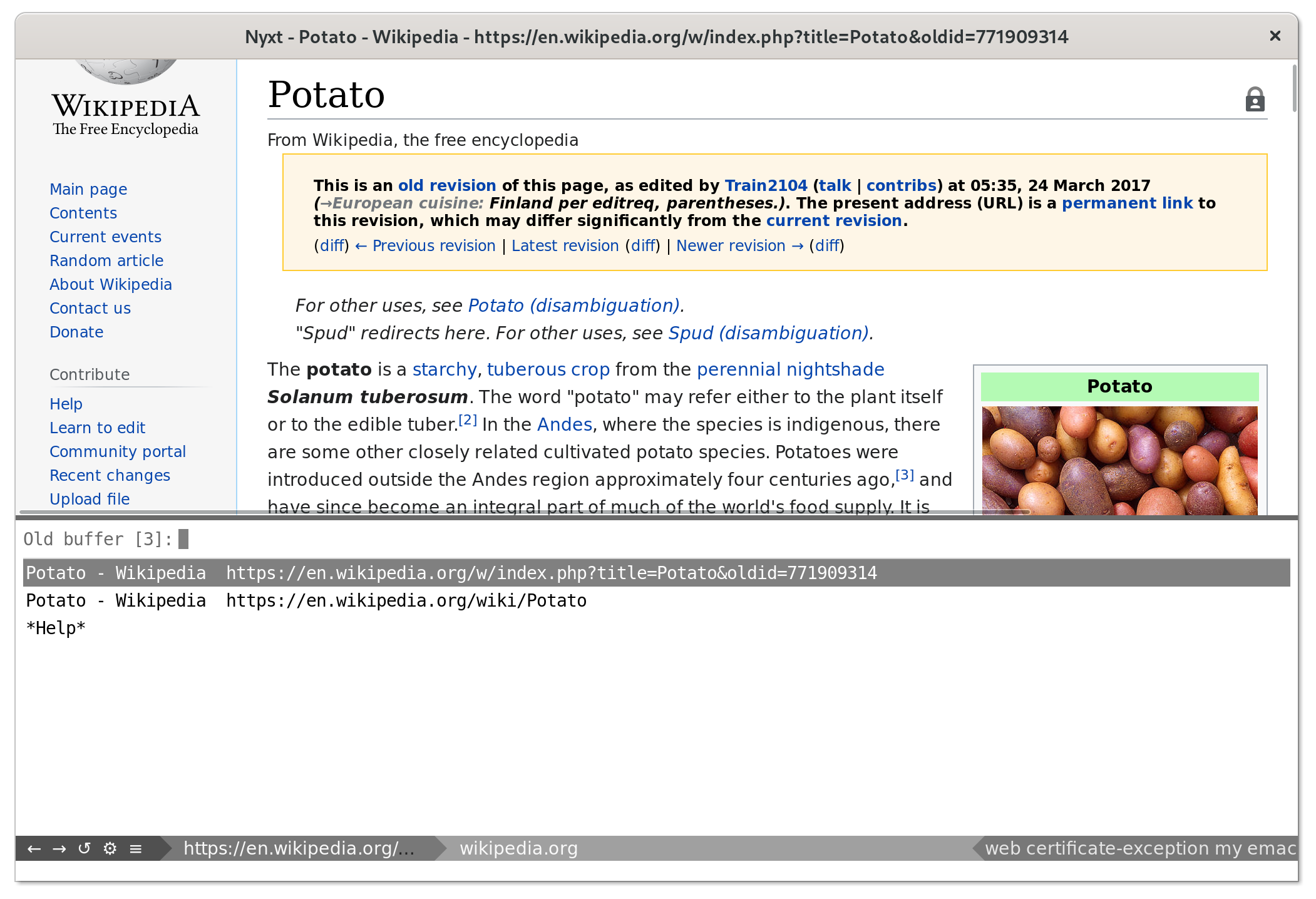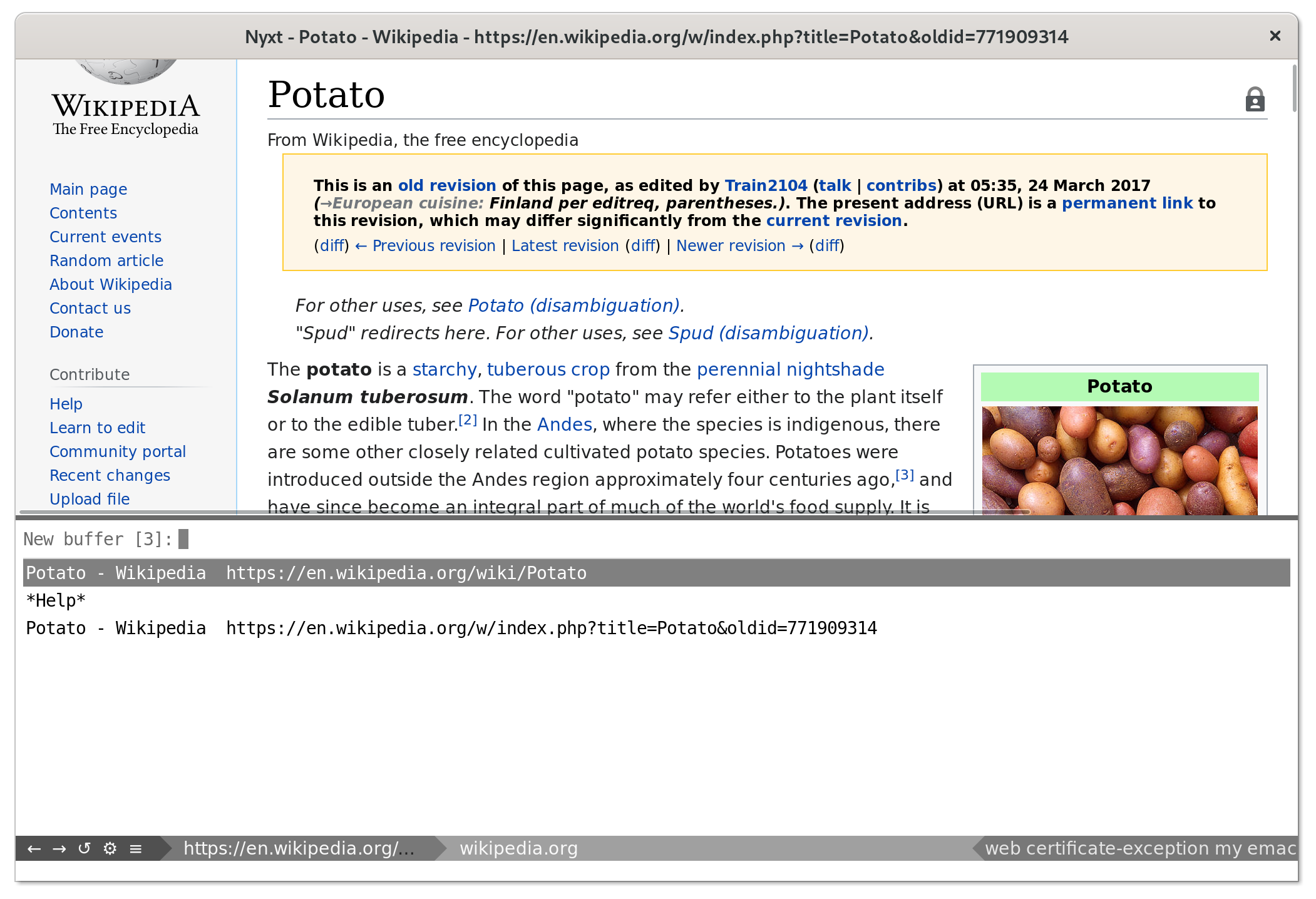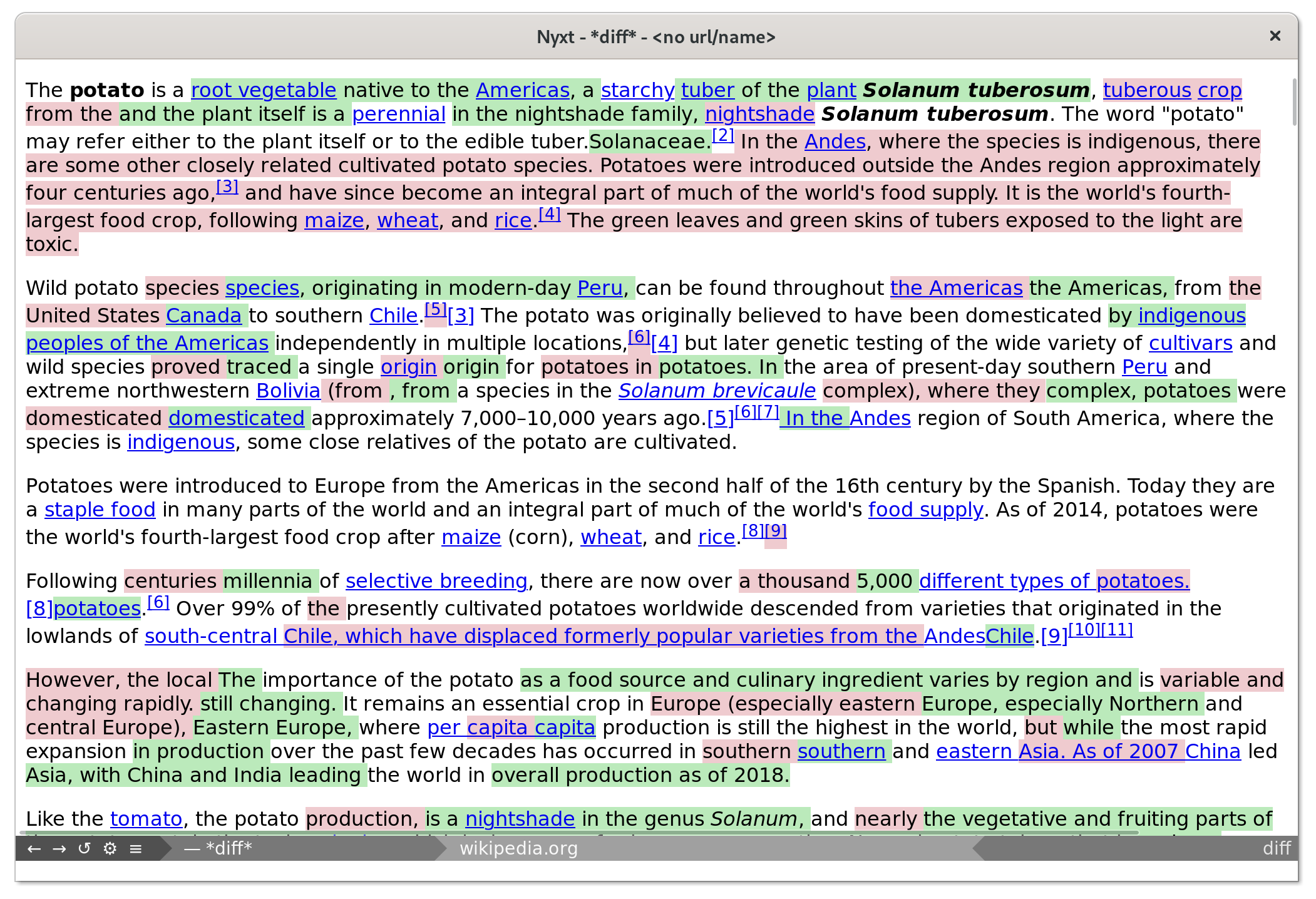2021-03-18, updated: 2024-03-12
Tested with Nyxt 2 Pre-release 6.
diff-mode lets you track changes
Observation: This feature is not part of Nyxt since version 3 Pre-release 3 due to architectural changes. Namely the introduction of Nyxt's custom schemes that prevent uncontrollably requesting HTTP(s) resources such as scripts and styles. Refer to the article on internal pages and schemes to learn more.
Modes keep springing up like mushrooms in Nyxt. If you've paid attention to our latest article, it should come as no surprise.
Diff mode does what you expect, if you're familiar with tools such as GNU diff. In short, it compares two web pages!
How to Use It?
Firstly we need two buffers. Let's say that we'd like to compare an older Wikipedia article with its most up-to-date version. From the buffer corresponding to the oldest piece of information, we can call diff from the minibuffer.

Then, we choose the current buffer, which already appears at the top.

Now, we choose the other buffer, corresponding to the latest piece of information. If that's the last buffer you have visited, it should again appear at the top.

And tada!

Notice that the order in which we provided the buffers does play a role!
Let me show you another example. You might be aware that Nyxt changed its name recently. Let's compare its Github README before and after.

Future Work
As you can imagine, any two bits of valid HTML can be compared against each other. This means web buffers, HTML files, or HTML tags can be provided. It will also be possible to display the diff side-by-side, rather by line-by-line as you saw above.
If you have ideas, complaints or any comments don't hesitate to get in touch!
Did you enjoy this article? Register for our newsletter to receive the latest hacker news from the world of Lisp and browsers!
- Maximum one email per month
- Unsubscribe at any time
